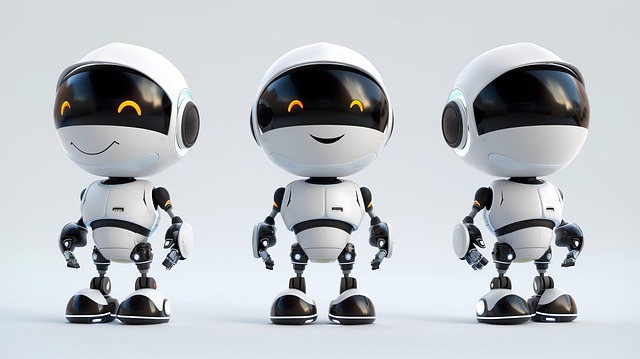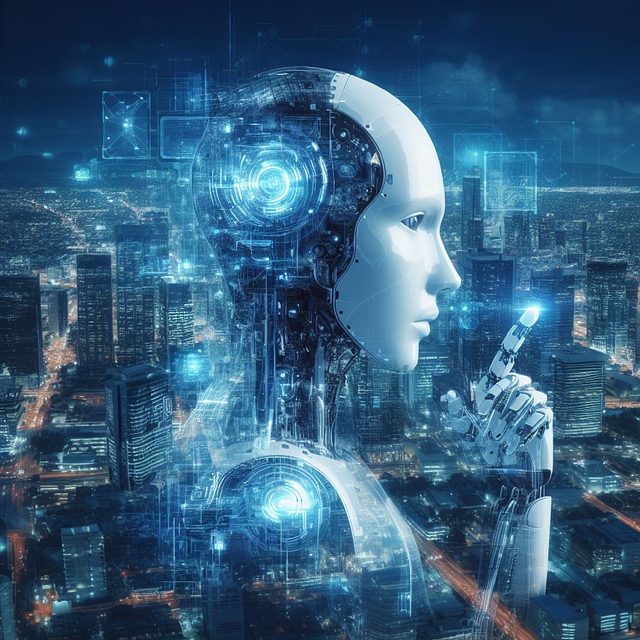“Discover the transformative power of AI chatbots, an evolving technology revolutionizing interactions between humans and machines. This comprehensive guide explores the intricate world of artificial intelligence chatbots, from their foundational language models to cutting-edge applications. We’ll dissect how these chatbots learn and adapt, unraveling the training processes behind their impressive capabilities. Furthermore, we’ll delve into the profound impact on industries, ethical dilemmas, and future possibilities, offering a holistic view of AI chatbot development and deployment.”
- Understanding AI Chatbots: Unlocking the Potential of Language Models
- How Do AI Chatbots Work? A Deep Dive into Their Training and Functionality
- Benefits and Applications: Revolutionizing Customer Service and Beyond
- Ethical Considerations and Future Prospects: Navigating the AI Chatbot Landscape
Understanding AI Chatbots: Unlocking the Potential of Language Models

AI chatbots are revolutionizing the way we interact with technology, offering a more natural and engaging communication experience. At their core, these virtual assistants leverage advanced language models, powered by artificial intelligence, to understand and generate human-like text. By processing vast amounts of data, AI chatbots learn patterns, context, and semantics, enabling them to engage in meaningful conversations.
The potential of AI chatbots extends far beyond simple Q&A sessions. They can assist with customer service, provide personalized recommendations, automate tasks, and even offer therapeutic support. As language models continue to evolve, these chatbots will become increasingly sophisticated, understanding nuanced contexts, emotions, and intent, thereby unlocking a world of possibilities for enhanced user experiences across various industries.
How Do AI Chatbots Work? A Deep Dive into Their Training and Functionality

AI chatbots have revolutionized the way we interact with technology, offering natural language interactions that feel human-like. Under the hood, these intelligent assistants leverage advanced artificial intelligence and machine learning techniques to understand and respond to user queries. The heart of their functionality lies in intricate training processes.
Training an AI chatbot involves feeding it vast amounts of textual data, often derived from diverse sources like books, articles, and internet conversations. This data is processed using algorithms that teach the model to recognize patterns, contextual relationships, and appropriate responses. Over time, as the model is exposed to more examples, its predictive abilities enhance, allowing it to generate coherent and contextually relevant replies. The key lies in fine-tuning these models to ensure they not only grasp the nuances of language but also adapt to specific use cases and domains.
Benefits and Applications: Revolutionizing Customer Service and Beyond

AI chatbots are transforming the way businesses interact with their customers, offering numerous benefits that enhance user experiences and drive operational efficiency. One of the most significant advantages is their 24/7 availability; they can handle customer inquiries promptly, reducing response times compared to human agents. This capability is especially valuable for global organizations serving diverse time zones.
Moreover, these chatbots provide consistent and personalized interactions. By leveraging machine learning algorithms, they can understand and adapt to user needs, delivering tailored solutions. From simple query resolution to complex issue escalation, AI chatbots streamline customer service processes, allowing human agents to focus on more critical tasks that require empathy and advanced problem-solving skills.
Ethical Considerations and Future Prospects: Navigating the AI Chatbot Landscape

As AI chatbots continue to evolve and integrate into various aspects of our lives, ethical considerations become increasingly vital. Developers must ensure transparency in how these bots operate, addressing concerns around data privacy and security. The potential for bias in training data is a significant challenge; efforts should be directed towards creating diverse datasets and implementing mechanisms to mitigate biased outcomes. Additionally, the impact on employment is a complex issue—while AI chatbots can automate tasks, they also create new job opportunities, necessitating reskilling and upskilling initiatives.
Looking ahead, the future of AI chatbots holds immense promise. These conversational agents can revolutionize customer service, healthcare, and education by providing personalized, accessible support. The key to realizing this potential lies in responsible development, fostering public trust, and continuous innovation. By navigating the ethical landscape and embracing collaboration between developers, policymakers, and users, we can shape an inclusive AI chatbot ecosystem that benefits society as a whole.
AI chatbots are transforming industries, enhancing customer experiences, and unlocking new possibilities. From revolutionizing customer service to navigating complex ethical landscapes, these language models offer immense potential. As technology advances, it’s crucial to continue exploring their capabilities while ensuring responsible development and deployment. By understanding how AI chatbots work and their diverse applications, we can harness their power to create a more efficient and connected future.
